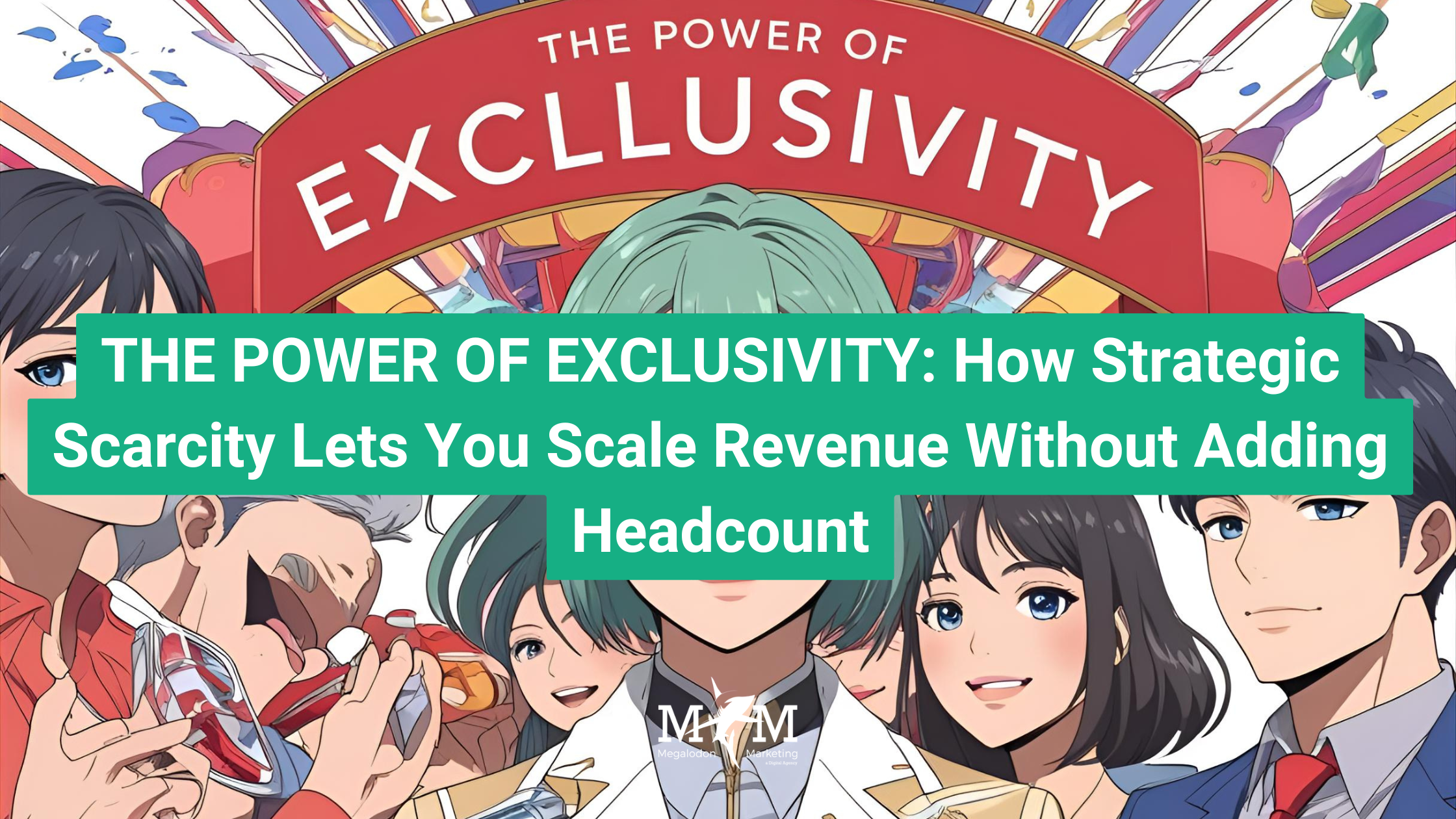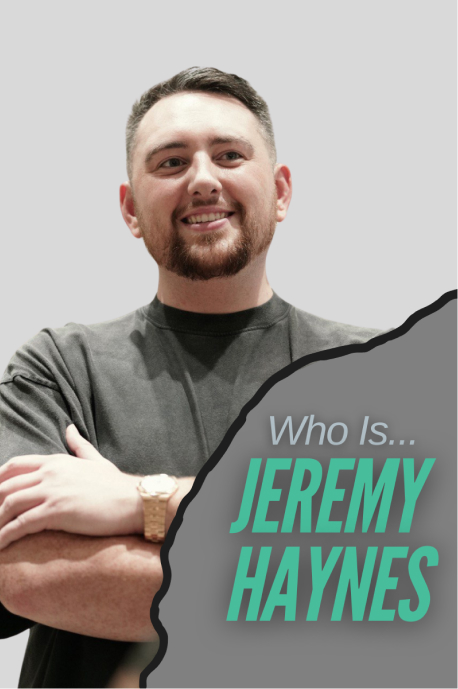I hope you enjoy reading this blog post. If you want my team to just do your marketing for you, click here.

I hope you enjoy reading this blog post. If you want my team to just do your marketing for you, click here.
Author: Jeremy Haynes | founder of Megalodon Marketing.

Earnings Disclaimer: You have a .1% probability of hitting million dollar months according to the US Bureau of Labor Statistics. As stated by law, we can not and do not make any guarantees about your own ability to get results or earn any money with our ideas, information, programs or strategies. We don’t know you and, besides, your results in life are up to you. We’re here to help by giving you our greatest strategies to move you forward, faster. However, nothing on this page or any of our websites or emails is a promise or guarantee of future earnings. Any financial numbers referenced here, or on any of our sites or emails, are simply estimates or projections or past results, and should not be considered exact, actual or as a promise of potential earnings – all numbers are illustrative only.
Watch the full video breakdown on this topic here.
Scaling is binary: either you protect margin or you surrender it. Exclusivity protects margin because human psychology values what is scarce. When you tighten access, the offer’s perceived—and real—value rises. Every luxury house does this:
All three brands prove the same thesis: limited seats plus rising qualification standards equals permission to charge more. And that same math converts perfectly to high-ticket education, SaaS, coaching, agency retainers, or any service where human bandwidth is the choke-point.
You launch a call funnel. If you’re sane, you do not unleash a rookie sales team yet. You take calls yourself—or you deploy AI/LLM call analysis—to harvest real-time feedback. This is where dollars are most flammable; fewer calls lost to bad framing equals faster break-even.
After tweaking front-end messaging and plugging back-end leaks, you start seeing good prospects consistently. Now you can bring vetted closers onto the phones because you know exactly what angles close and you can train to that standard.
The calendar stays packed, your show-rate hums, and fulfillment bandwidth starts squeaking. This is the moment exclusivity becomes your best friend. Instead of frantically hiring more salespeople (and igniting the hire–train–fire carousel), you tighten the gate:
Margin surges while headcount stays flat.
Your sales floor lives and dies on lead temperature. I measure it on a four-step spectrum:
| Temperature | Definition | Typical Sales Result |
|---|---|---|
| Curious | Merely intrigued; high no-show risk. | Education call, salesperson annoyed. |
| General Interest | Recognizes pain; open to options. | Convertible if framed. |
| High Interest | Accepts need; shopping solutions. | Prime buyer territory. |
| Convicted (Sold) | Already believes you are the bridge. | Lay-up close. |
If your funnel skews toward “Curious,” expect ghosting and long cycles. Dial in messaging so most booked calls fall in General / High. Then exclusivity tactics will magnify revenue instead of starve it.
Even scarcity needs scaffolding. Three assets stay mandatory:
When your show-rate is high without these assets, that’s proof the offer is red-hot. When you add them, conversion rocket-boosts.
You qualify to pull the exclusivity lever only when:
Once those boxes are ticked, deploy any—or all—of the following:
| Gate | What It Does | Example |
|---|---|---|
| Minimum Revenue | Filters low-liquidity buyers; protects community value. | Must be at $100 k +/mo to enter. |
| Time Commitment | Ensures client sticks around long enough to win, enhancing your reputation. | One-year minimum membership. |
| Seat Cap / Waiting List | Manufactures scarcity even if demand spikes. | 150-seat mastermind; join list if full. |
| Price Ladder | Rewards early adopters, penalizes hesitation. | Price rises every quarter or after X new members. |
Remember: each gate cuts volume but raises both per-deal revenue and average client quality, making delivery easier.
My own Inner Circle illustrates the cycle:
Results:
Scarcity plus proof equals an unstoppable flywheel.
Want the new LaFerrari successor? Better own an F40, a LaFerrari, and multiple dealer-purchased models. Multi-million-dollar collector Rob Dyrdek still had to publicly praise two Beverly Hills sales reps on Instagram to stay on the list.
Ten years ago Birkins gathered dust. Hermès throttled production, demanded purchase history in scarves, shoes, and homeware, and flipped demand overnight. Today TikTok strategists map out which city to fly to and what accessories to buy first just for a shot at the bag.
Walk in wearing an RM 10 and the Rolex boutique pulls grails from “the back” while the next guy is wait-listed. Buy two ladies’ references and an entry-level model, then maybe—maybe—you’ll be considered for the 50-piece limited.
Lesson: The wealthier the buyer, the more they respect a velvet rope.
Scarcity in hospitality proves you don’t need infinite seating to print cash—you need finite seating plus unshakeable standards.
Great agencies almost always look busy—because they are. They stake a “wait-list” sign in the window, pick only clients with budgets and attitude alignment, and raise retainers instead of hiring reckless armies of closers.
You can mimic the six-seat sushi model:
Potential buyers self-sort; your ops team serves fewer but better clients; NPS soars, fueling the next sell-out cycle.
Exclusivity is not elitism—it’s efficiency. By limiting who can buy, you:
The world’s most profitable brands—from six-seat sushi joints to $5 M hypercars—run this playbook daily. You can, too. Audit your funnel, measure your bandwidth, and when the pipeline hums, tighten the gate.
Then watch revenue climb while your calendar finally breathes.
Now close the browser tab, draw your own velvet rope, and get richer.

Jeremy Haynes is the founder of Megalodon Marketing. He is considered one of the top digital marketers and has the results to back it up. Jeremy has consistently demonstrated his expertise whether it be through his content advertising “propaganda” strategies that are originated by him, as well as his funnel and direct response marketing strategies. He’s trusted by the biggest names in the industries his agency works in and by over 4,000+ paid students that learn how to become better digital marketers and agency owners through his education products.

Jeremy Haynes is the founder of Megalodon Marketing. He is considered one of the top digital marketers and has the results to back it up. Jeremy has consistently demonstrated his expertise whether it be through his content advertising “propaganda” strategies that are originated by him, as well as his funnel and direct response marketing strategies. He’s trusted by the biggest names in the industries his agency works in and by over 4,000+ paid students that learn how to become better digital marketers and agency owners through his education products.
This site is not a part of the Facebook website or Facebook Inc.
This site is NOT /endorsed by Facebook in any way. FACEBOOK is a trademark of FACEBOOK, Inc.
We don’t believe in get-rich-quick programs or short cuts. We believe in hard work, adding value and serving others. And that’s what our programs and information we share are designed to help you do. As stated by law, we can not and do not make any guarantees about your own ability to get results or earn any money with our ideas, information, programs or strategies. We don’t know you and, besides, your results in life are up to you. Agreed? We’re here to help by giving you our greatest strategies to move you forward, faster. However, nothing on this page or any of our websites or emails is a promise or guarantee of future earnings. Any financial numbers referenced here, or on any of our sites or emails, are simply estimates or projections or past results, and should not be considered exact, actual or as a promise of potential earnings – all numbers are illustrative only.
Results may vary and testimonials are not claimed to represent typical results. All testimonials are real. These results are meant as a showcase of what the best, most motivated and driven clients have done and should not be taken as average or typical results.
You should perform your own due diligence and use your own best judgment prior to making any investment decision pertaining to your business. By virtue of visiting this site or interacting with any portion of this site, you agree that you’re fully responsible for the investments you make and any outcomes that may result.
Do you have questions? Please email [email protected]
Call or Text (305) 704-0094